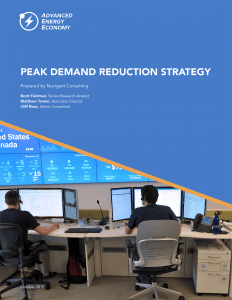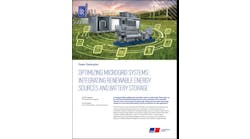Peak Demand Reduction Strategy Report
J.R. Tolbert says he knew a recent report about the value of demand response in Massachusetts and Illinois would show positive benefits. But when the senior director of state policy at the Advanced Energy Economy saw the numbers in AEE’s new report,”Peak Demand Reduction Strategy,” he was wowed by the savings reaped in the two states.
“When I looked at both Massachusetts and Illinois, and the avoided costs that play out, to be honest, I had this ‘Oh my gosh’ reaction,” he says.
The report, prepared by Navigant Consulting, concluded that for every $1 spent on reducing peak demand, at least $2.62 can be saved by ratepayers in Illinois and $3.26 by ratepayers in Massachusetts.
“In the case of Massachusetts, in the high-case scenario, total avoided costs are $883 million per year,” says Tolbert. “As I thought of that, I realized, ‘Wow, that’s over three-quarters of a billion in avoided cost that demand response can provide.’ I had had meetings with Enernoc and Opower where they used these numbers, but until you see them on paper…you can’t process them.”
The report also shows that states that implement peak demand policies or programs can reduce costs for customers, strengthen the reliability of electric service, and help comply with EPA’s Clean Power Plan.
Given the benefits of demand response, why aren’t we seeing more of it?
“The lack of policy guiding the market is the big challenge,” says Tolbert. “In states that don’t have demand response policies or programs up and running, there’s no incentive within the existing utility model.”
In states that have demand response policies — Massachusetts and Maryland, for example — AEE has seen large growth, and along with that, all the associated benefits.
“Opower has done a lot of demand response in Maryland and Enernoc, which is based in Boston, has a lot of programs in Massachusetts,” he says. “Both those states sent clear signals on the importance of demand response and the ability of demand response to meet peak demand. They have guidelines and standards for their utilities.”
“Demand response reduces peak demand while saving consumers money. As states plan for their energy future, demand response can and should be a go-to option for legislators and regulators,” he says.
The report is available for free download here.
Track news about demand response by following us on twitter @EfficiencyMkts.








